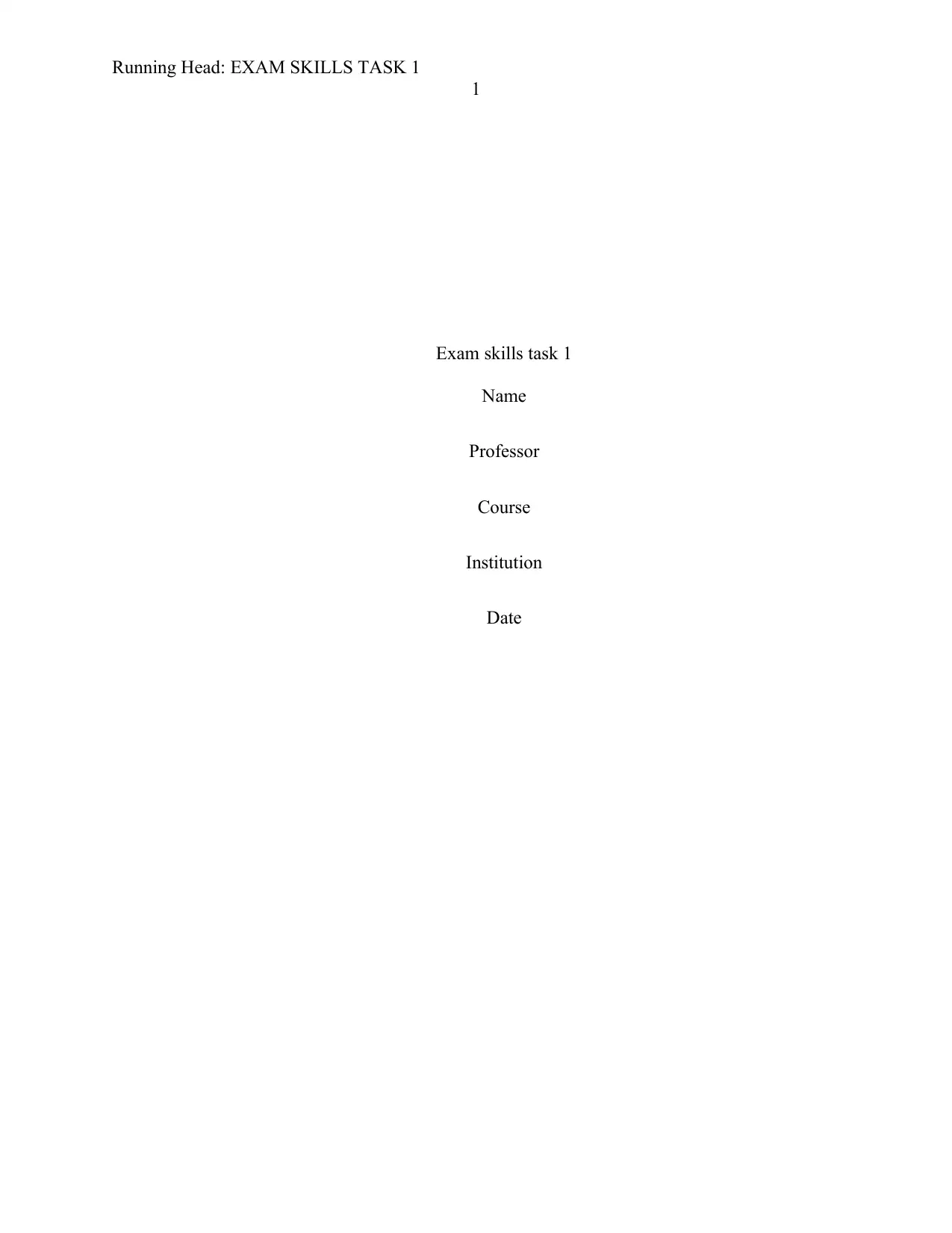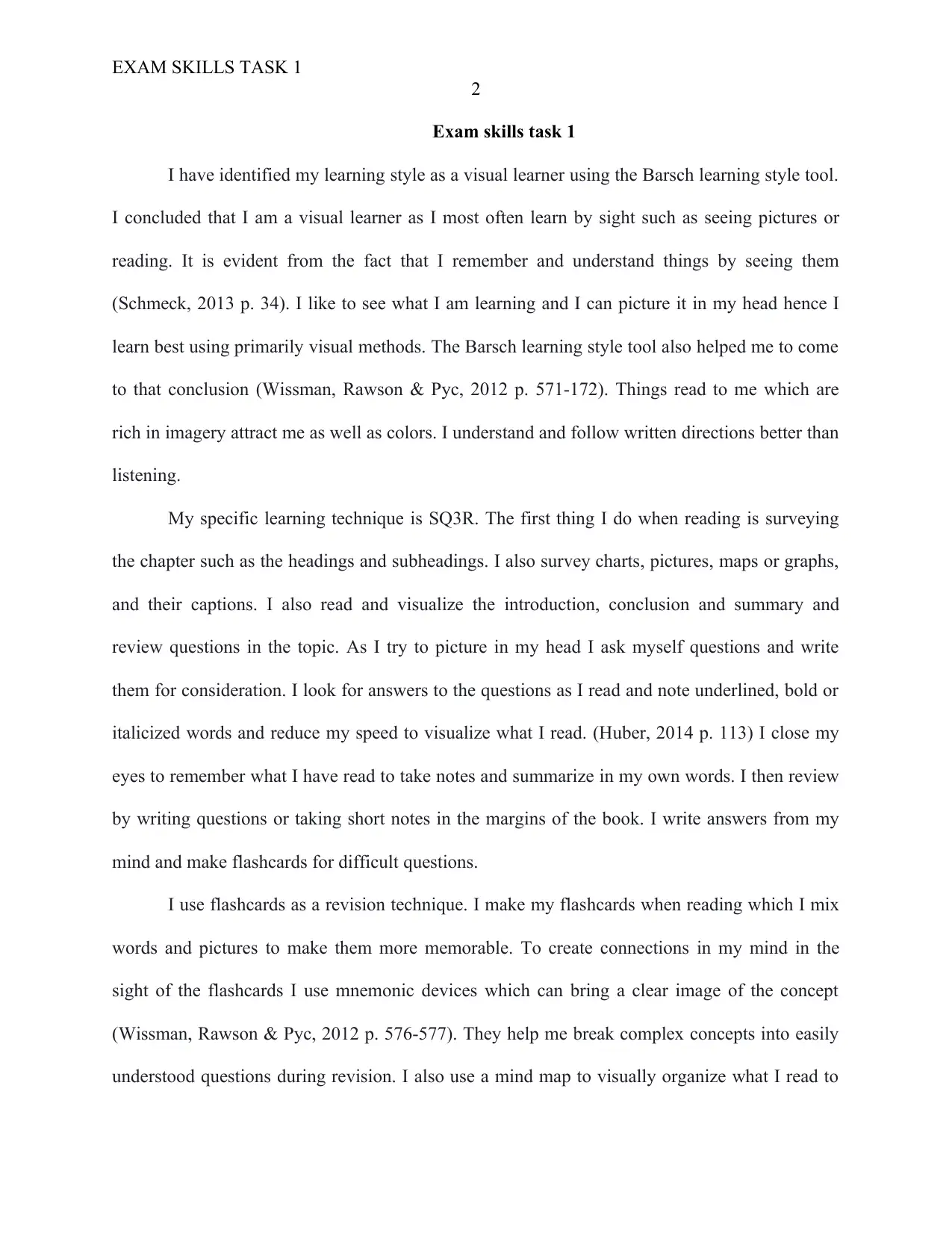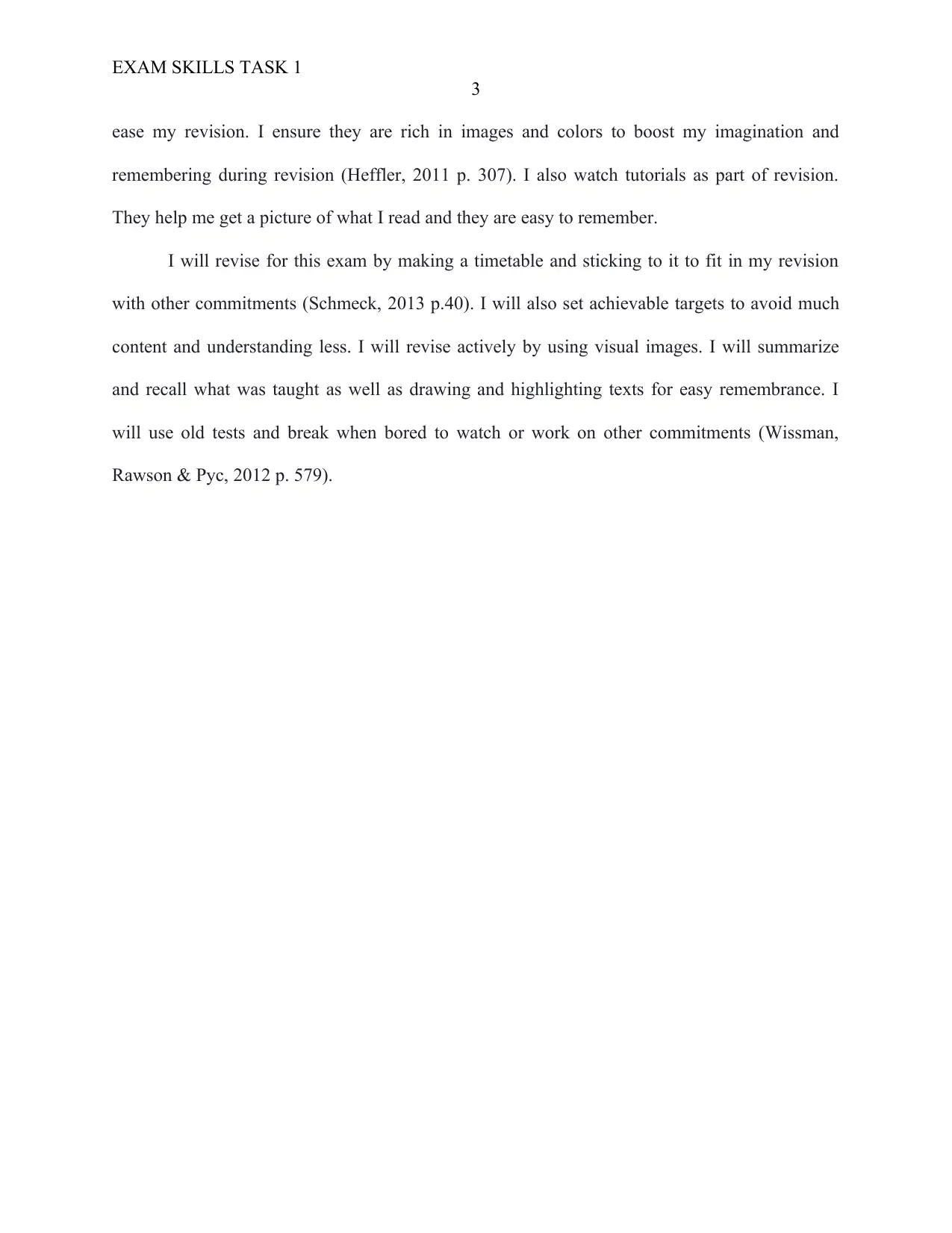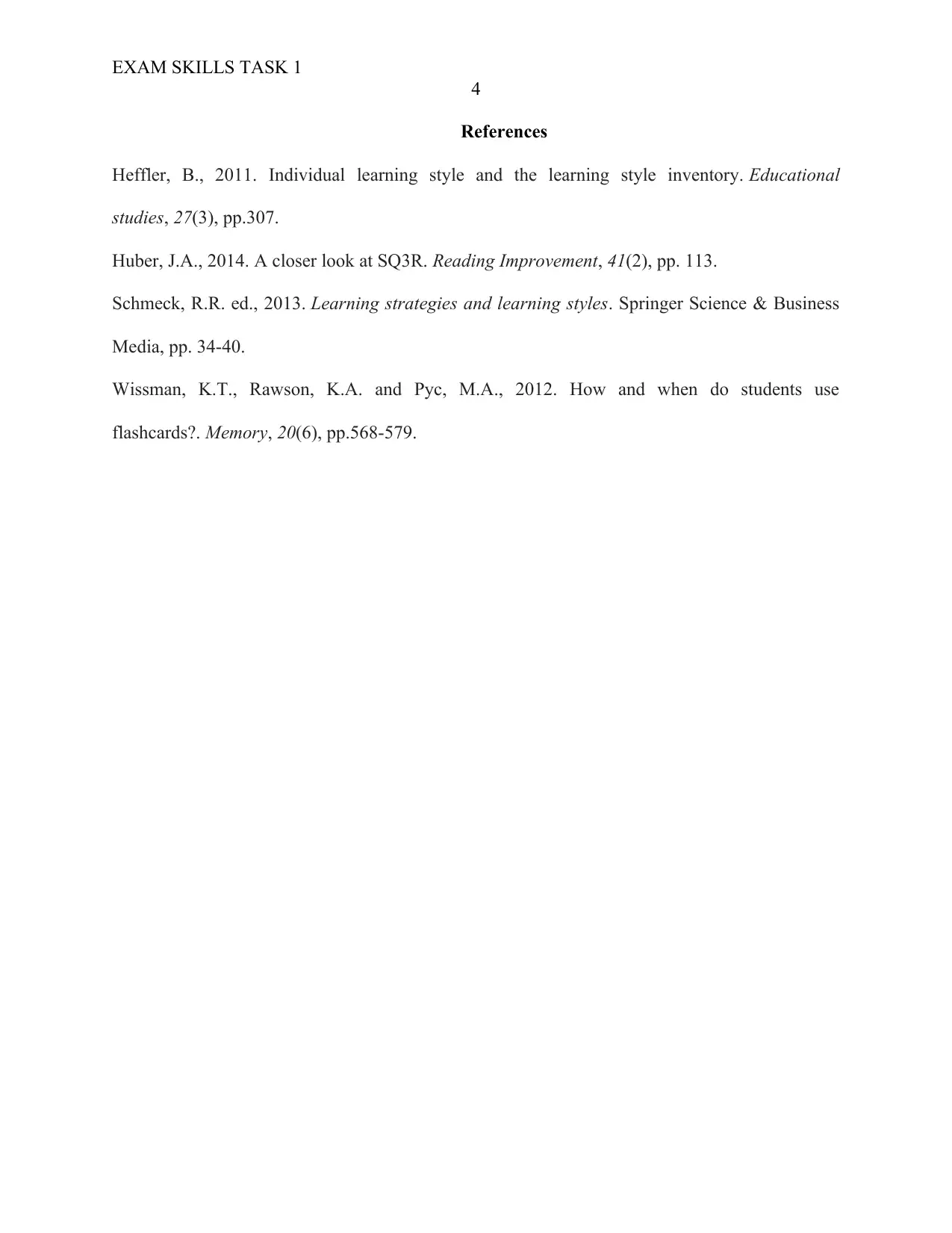Exam Skills Task 1: Analyzing Learning Style and Revision Techniques
VerifiedAdded on 2022/10/07
|4
|675
|21
Homework Assignment
AI Summary
This assignment, completed by a student, focuses on identifying a personal learning style and outlining effective revision techniques for exam preparation. The student utilizes the Barsch learning style tool to identify themselves as a visual learner, supporting this conclusion with observations about their learning preferences. The assignment details the SQ3R learning technique and highlights three revision methods: flashcards, mind maps, and the use of tutorials, tailored to the student's visual learning style. Furthermore, the student provides a practical revision plan, including time management strategies and active revision techniques, demonstrating a comprehensive approach to exam preparation. References are also provided. This assignment is available on Desklib.
1 out of 4











![[object Object]](/_next/static/media/star-bottom.7253800d.svg)